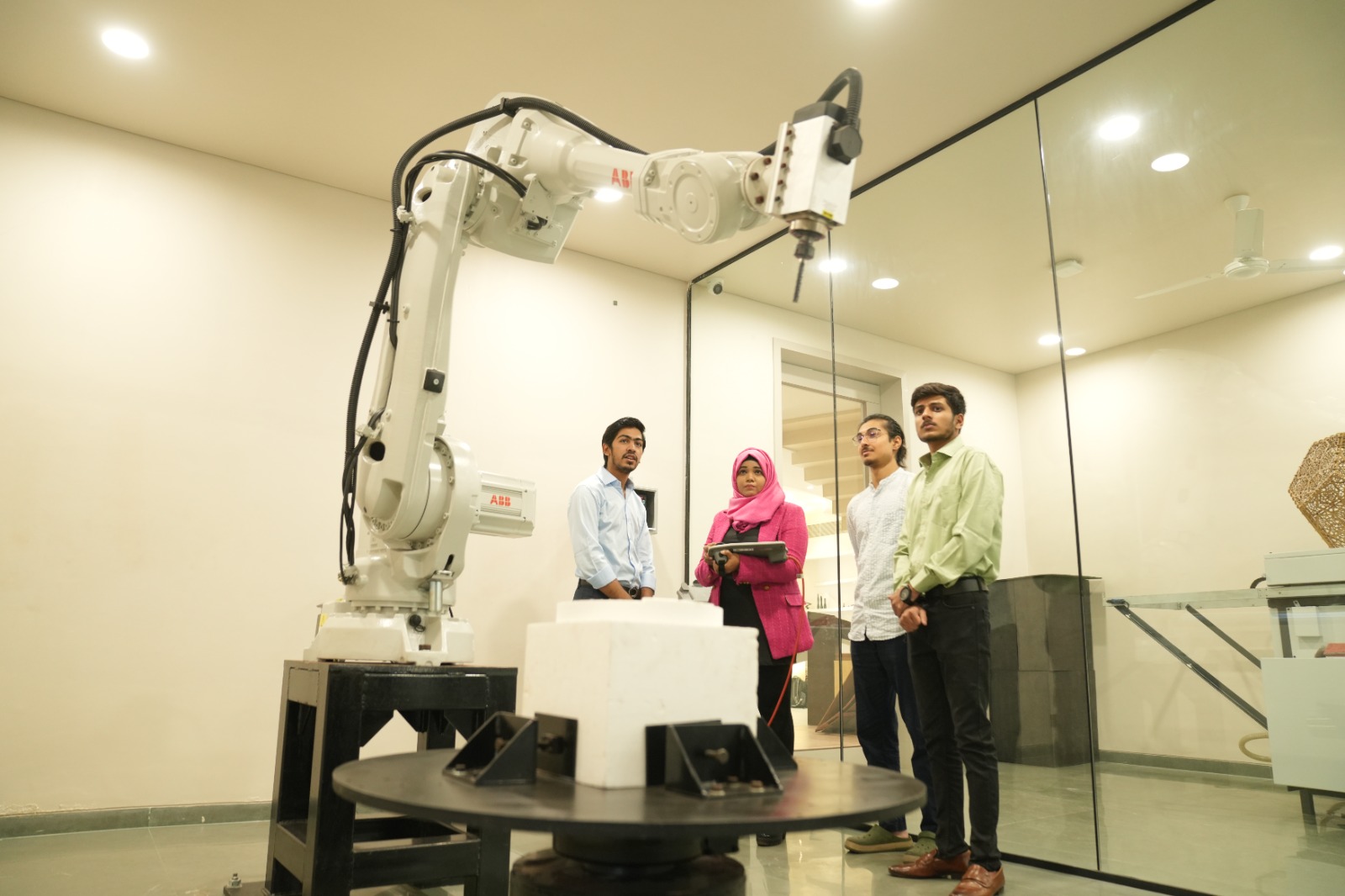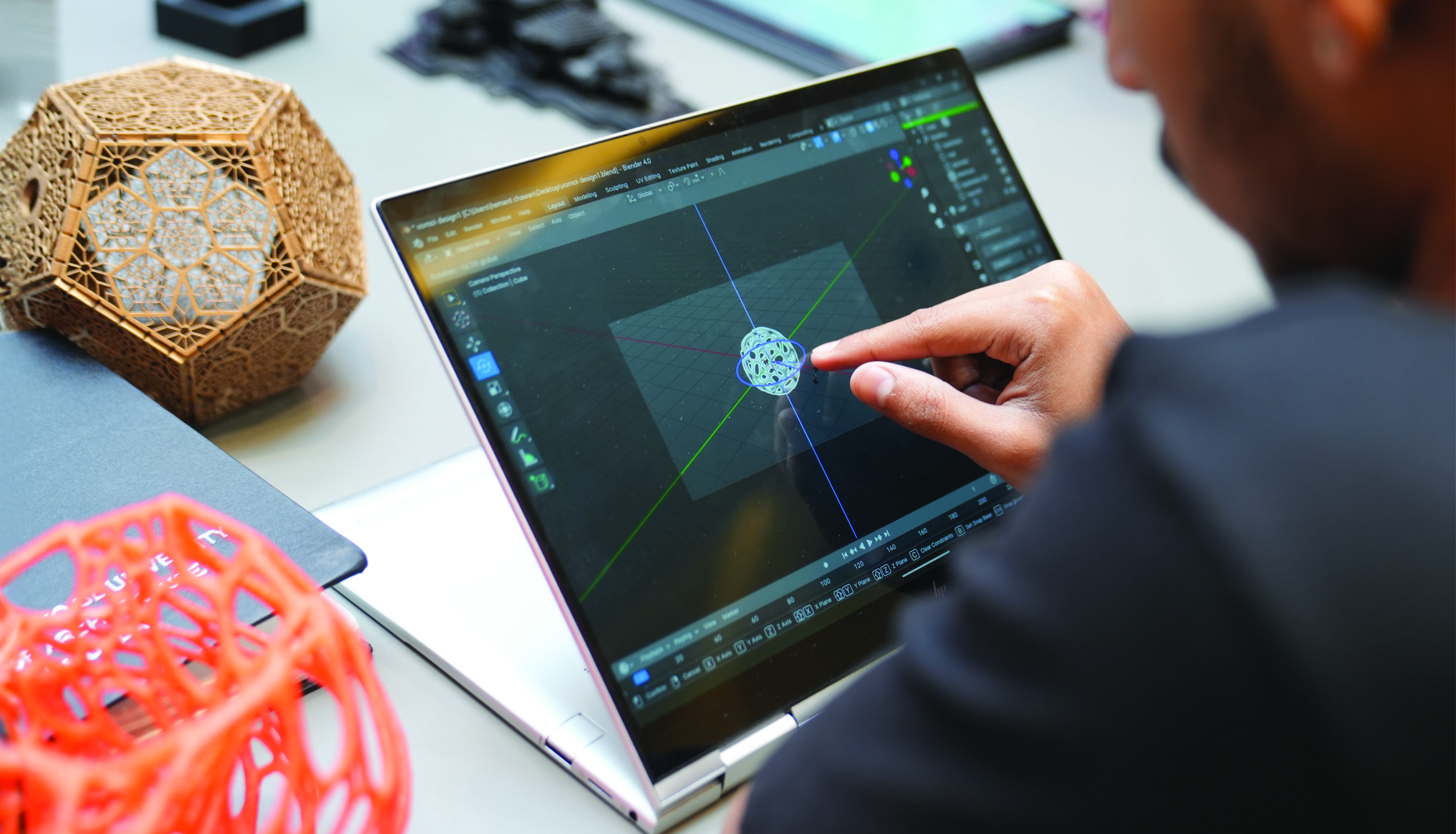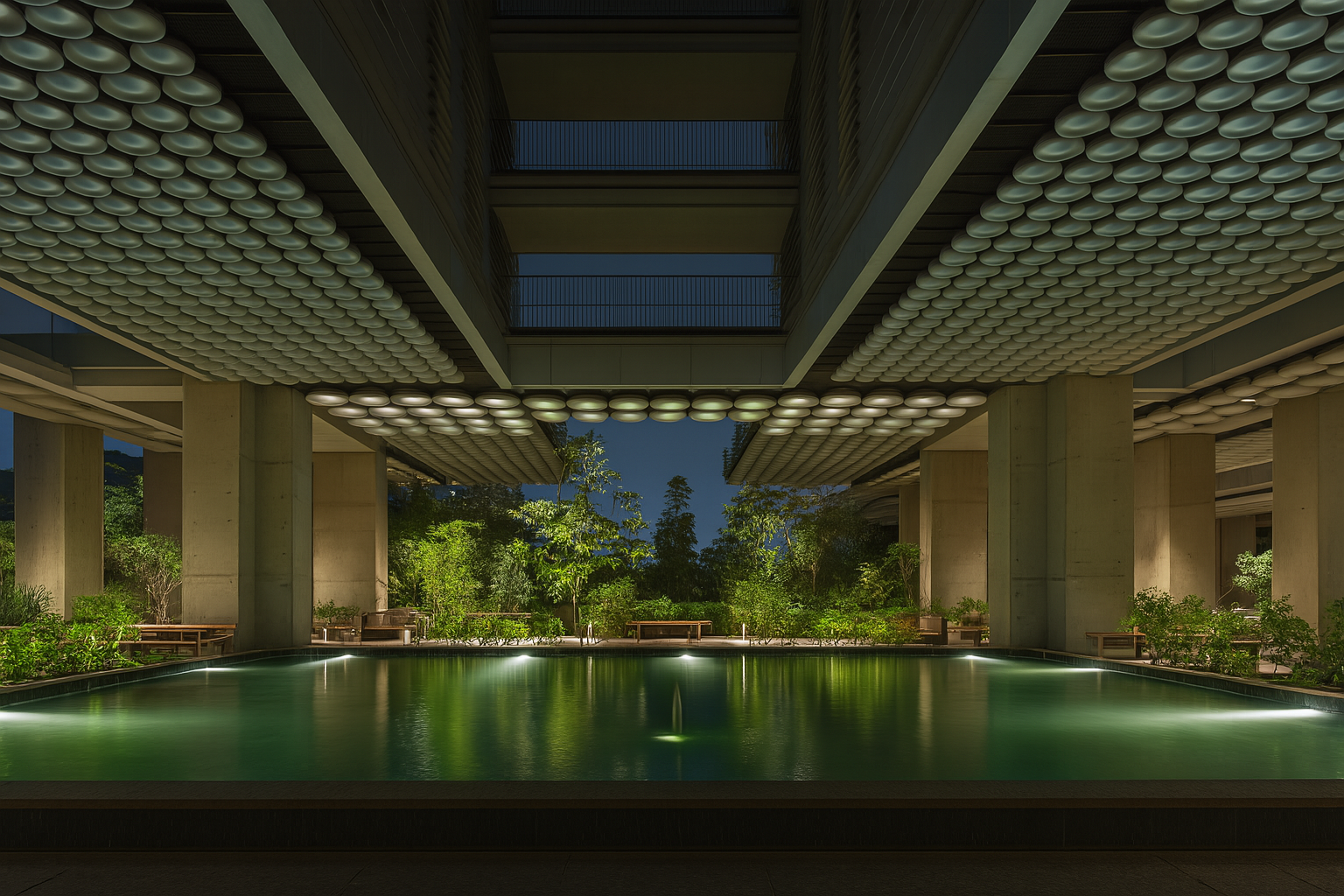About the
Program
Introducing the Master of Architecture in Advanced Computation in Architecture and Design
We are proud to launch the Master of Architecture in Advanced Computation in
Architecture and Design — a forward-thinking postgraduate program designed to shape the next generation of architects and designers at the intersection of design innovation and computational intelligence.
This two-year program equips students with advanced skills in computational design, parametric modelling, algorithmic thinking, data-driven design, generative systems, and digital fabrication. With the rapid evolution of technology in the built environment, the program addresses the urgent need for professionals who can think critically and work fluidly across digital and physical realms.
The curriculum blends theoretical frameworks with hands-on studio-based learning and research-led inquiry. Students engage in real-world challenges and explore design solutions informed by emerging tools such as artificial intelligence, machine learning, and simulation-based optimization. Interdisciplinary collaboration, experimentation, and innovation lie at the core of the program.
The primary intention here is to bridge the gap between local and regional context with global technologies.
Opportunity:
With the rise of smart cities, digital construction, and data-driven design, the architectural profession is undergoing a major technological transformation. Navi Mumbai, a planned city with expanding infrastructure and proximity to Mumbai’s dynamic design ecosystem, offers an ideal context for launching such a forward-thinking program.
Competencies such as parametric design, algorithmic modeling, Building Information Modeling (BIM), and artificial intelligence in architecture are increasingly sought after in global architecture, engineering, and construction (AEC) industries. Moreover, the program can act as a research and innovation hub, contributing to sustainable design, responsive environments, and digital fabrication practices tailored to India’s urban challenges.
Course Duration
The post-graduate full time degree program shall be of duration of 2 academic years or 4 semesters; with a sanctioned intake of 20 candidates.
Years to complete

SEMESTERS

SEATS

Who should opt for the
Program
This program is ideal for graduates in architecture, design, or allied fields who aspire to lead the future of architecture through technological excellence and creative computation. With expert faculty, state-of-the-art facilities, and global industry engagement, the program empowers students to become pioneers of transformative design practice in a rapidly changing world.
The Master’s in Advanced Computation in Architecture and Design is ideal for individuals who are passionate about integrating technology, design, and data-driven strategies to shape the future of the built environment. This program is best suited for:
● Architecture Graduates who are looking to deepen their understanding of computational design, parametric modelling, and algorithmic thinking. All those who have a strong interest in mathematics, computational geometry, spatial analytics, and design automation. Others who aspire to lead innovation in smart cities, parametric architecture, robotics in construction, or immersive environments (AR/VR). All those who wish to lead the change that India is ready for.
● Architects who are tech-savvy creators interested in blending coding, scripting, and machine learning with spatial design to create intelligent, responsive, and sustainable environments.
● Researchers and Academics in architecture aiming to explore the intersection of design, computation, and digital fabrication through advanced theoretical and practical frameworks. All those who intend to explore the application of global computation technology to regional variations and intricacies.
If you are driven by curiosity, innovation, and a desire to rethink how design is conceptualized and constructed using digital tools — this program is for you.
Program Objectives and Syllabus
Goal of the program
The program envisages to be recognized as a place for nurturing graduates adept at using technology integrated with regional and local knowledge systems, social concerns and sustainability issues to offer optimized design solutions at multiple scales.
Program objectives:
The Master of Computation Architecture and Design Program has been framed on the basis of following objectives:
1. To understand the role of Computational Design in shaping the built environment in India and globally.
2. To reinforce research and innovation in employing computational Design for sustainable development.
3. To foster a deeper connection between nature, culture, and technology in design.
4. To foster interdisciplinary collaborations and knowledge exchange between academia and industry/ practice.
5. To promote the integration of innovative materials and technologies in design and construction.
6. To nurture socially responsible and globally competitive designers bringing positive impact in the field of design and architecture
With the objective of offering holistic education, following four pillars shape the courses across the four semesters.
1) Theory, Philosophy Critical Thinking: This pillar aims that graduates have a strong theoretical and philosophical foundation. It shall orient them to the way architecture shaped at the turn of the 21st century right up to the current times due to the various socio-political and socio-cultural forces. It shall imbibe critical thinking such that graduates are quipped to form an argument, have their own opinion and take a stand.
2) Design Processes and algorithmic thinking: This pillar equips the graduates towards parametric thinking and enables them to various design processes. It is the application of theories learnt in 1. Above. It is the core pillar of the program where integration of all learning happens.
3) Computational Skills for Design and Production: Here the graduates shall be equipped with all the software and technology required to sharpen their skills. They shall be introduced to various design communication methods as well.
4) Entrepreneurship Abilities/ Employability: To make sure that the graduates prove their mettle in the industry and leave a mark to make the world a better place to live. Here the graduates shall be oriented to ways of bring their innovative ideas to fruition
Program
Outcome
The Outcomes specific to the P.G Program under consideration are as follows
| By the end of the Program the students shall be able to demonstrate the following_ | |
| PSO1 | A coherent integration of Algorithmic Design thinking, Generative Design processes and Advanced Computation in the creation of a built environment. |
| PSO2 | A deep understanding of History and Theory of Advanced Computation in the development of the built environment. |
| PSO3 | The ability to situate research in regional and local contexts and analyze the role of Advanced Computation in bringing about contextually driven radical ideas |
| PSO4 | The skill of Advanced Computation in designing built environment |
| PSO5 | the ability to apply research findings towards sustainable development. |
| PSO6 | An ethical approach in the application of Advanced Computation in research (profession.) |
| PSO7 | An ability to adapt to evolving knowledge in Advanced Computation specially concerning technological & material advancements, conceptual & theoretical ideas. |
| PSO8 | The ability to work in collaboration and in multi-disciplinary environments to meet the challenges of a multi-dimensional society. |
International
Collaboration
Infrastructure
The school has state of the art infrastructure with equipped digital lab consisting of Laser cutting machines, 3D printing systems for additive manufacturing and robotic arm to name a few. We have a mac lab and Wacom lab equipped with software ready for students to explore. (Images provided in the folder).

Placements
● Architecture and Design Firms
● Real Estate and Infrastructure Companies
● Engineering and Construction Firms
● Technology and Software Companies
● Smart City Projects and Government Initiatives
● Sustainability and Environmental Firms
● Research and Academia
● Media, Gaming, and Virtual Reality Industries
● Entrepreneurial Ventures and Startups
● International Opportunities






